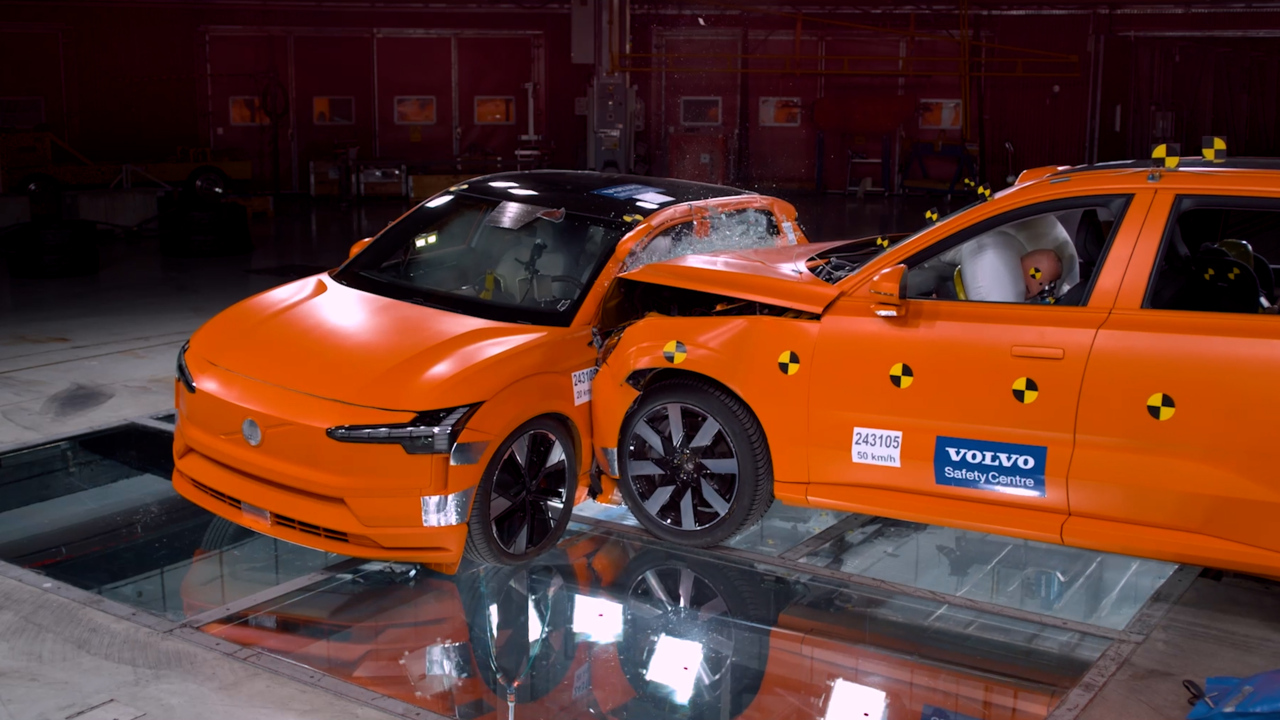At just 4,233 mm long, the EX30 is the smallest model Volvo sells. It weighs just 1,833 kg in its entry-level single-motor guise before you start adding equipment. The EX90 is an electric titan, stretching 5,037 mm and tipping the scales at 2,811 kg in its lightest form. Automotive News Europe was invited to see what happens when the Swedish automaker's biggest vehicle meets its smallest.
It's worth noting that the EX90 was doing 50 km/h, while the EX30 was doing 20 km/h at the time of impact. Speaking of speed, from 2020 all Volvo models are electronically limited to 180 km/h. Inside the more vulnerable SUV were two small female crash-test dummies on the side of the vehicle that Volvo's flagship crashed into.
Lotta Jakobsson, Senior Technical Specialist, Injury Prevention, explained in an interview with AN how the EX90's design reduces the risk of injury to those inside the EX30. The lower part of the front structure of the larger SUV interacts with the side structure of the smaller vehicle to better absorb the forces of the crash.
Since both SUVs are brand new, neither the EX30 nor the EX90 has been tested by Euro NCAP. It would be a sensation if the two SUVs received anything less than the maximum rating. Volvo's mission is not just to make its cars safer in the event of a crash, but to eliminate the likelihood of a crash. It's part of the Volvo Group's safety vision that accidents are preventable.
Source: Automotive News Europe

